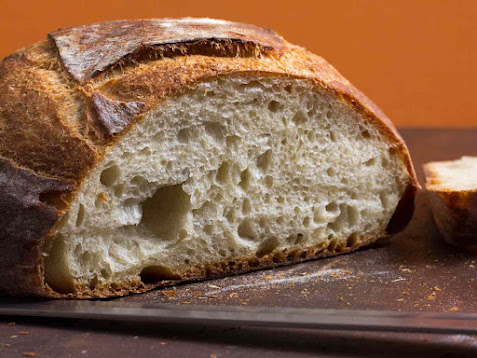BREAD MAKING PROCESS -The bread-making process is a time-honored craft that involves several key steps to produce delicious, fresh bread. Here's a basic overview of the bread-making process:
1. Ingredients: The first step in making bread is gathering all the necessary ingredients. The core ingredients for most bread recipes include flour, water, yeast, and salt.
2. Mixing: The dry ingredients (usually flour and salt) are combined in a mixing bowl. In a separate container, warm water is mixed with yeast to activate it. Once the yeast is frothy, it's added to the dry ingredients. Depending on the recipe, other liquids or fats may also be added at this stage. The mixture is stirred or kneaded until a dough forms.
3. Kneading: Kneading is a crucial step in developing gluten, which gives bread its structure and texture. The dough is placed on a floured surface, and it's folded, pressed, and turned repeatedly for a specific duration, usually around 10-15 minutes, until it becomes smooth and elastic.
4. Rising (Fermentation): The dough is placed in a clean, oiled bowl, covered with a damp cloth or plastic wrap, and left to rise. During this rising period, the yeast ferments the sugars in the dough, producing carbon dioxide gas that causes the dough to expand. This typically takes 1-2 hours, depending on the recipe.
5. Punching Down: After the initial rise, the dough is punched down to release excess gas and redistribute the yeast. This helps ensure even rising during the second proofing.
6. Shaping: The dough is divided into portions and shaped into the desired form, such as rolls, baguettes, or a loaf. The shaped dough is placed on a baking sheet or in a loaf pan for the final rise.
7. Final Rise (Proofing): The shaped dough is covered again and allowed to rise for a second time, which is usually shorter than the initial rise, about 30 minutes to 1 hour. The dough should double in size.
8. Baking: Preheat the oven to the specified temperature in the recipe. If desired, the bread's surface can be scored (slashed) before baking to control how it expands in the oven. The bread is then placed in the oven and baked until it's golden brown and sounds hollow when tapped on the bottom. Baking times and temperatures vary depending on the type and size of the bread.
9. Cooling: Once the bread is done baking, it should be removed from the oven and placed on a wire rack to cool. Allowing the bread to cool is essential to set the crumb structure and prevent it from becoming gummy.
10. Enjoy: Once the bread has cooled sufficiently, it's ready to be sliced and enjoyed. Freshly baked bread is best served warm with butter or your favorite toppings.



Comments
Post a Comment